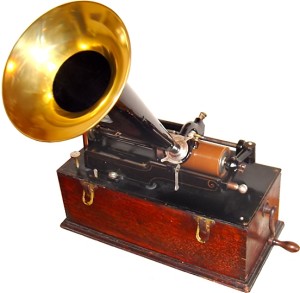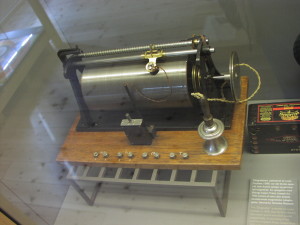There is one advantage age gives a person: it is perspective. The journey through time and experiencing what one experiences gives one a world view, a weltanschauung, which if understood can be an invaluable guide to the present.
Not all old people are wise. But they all have experiences that a wiser and younger person can learn from. To write such in today’s youth culture is tantamount to spitting in the wind. But the older I get I know it is true. I don’t claim to be wise, because I’m not. I do, though, have a bit of history under my belt which gives me some perspective.
Crispian Thurlborn’s sharing of a link on
ebook pricing got me started on thinking about writing and publishing. The link set me off in search of Dean Wesley Smith’s website. Smith has perspective. He also has some wisdom. His series,
Killing the Sacred Cows of Publishing, has valuable advice to consider. Thanks Crispian for the adventure in rumination!
O, To Be A Writer!
I’ve wanted to be a writer for over fifty years. That is probably longer than some of you have been alive. I looked forward every month, back in the ‘60s, to receiving my copies of The Writer and Writer’s Digest and dreamed of the day when a few scribbles on a sheet of paper would earn me hundreds of dollars (yeah, a hundred was big back then).
From then until now, I’ve observed what others have to say about writing and publishing. I’ve noticed two things: publishing has changed and writing has not. What was good writing in the ‘60s remains good writing in the teens of the 21st century. However, what was true about the publishing world of the ‘60s wasn’t even true 30 years later and is even less true today. The publishing world has changed big time.
A Mini Timeline of Publishing
Here is a very brief timeline of publishing:
1534 - Cambridge University Press founded. The world’s oldest publishing company.
1663 - The world’s first magazine appears in Germany.
1709 - British Copyright Act is passed. This lays the foundation for modern publishing.
1700s - Commercial lending libraries
1731 - The Gentleman’s Magazine. Considered to be the first modern magazine is published in England.
1793 - first daily newspaper appears in America.
1800s - Public libraries appear.
1845 - Paperbacks are introduced as newspaper supplements in US.
1850s - The techniques of mass production are adopted by the book trade. The publishing industry as we know it today begins in the Victorian era. That wonderful Machine Age!
The Writer and the Book!
The biggest change to publishing since Gutenberg’s printing press is the ebook. Inconceivable as a viable reading medium even ten years ago. The Kindle made it’s appearance on November 19, 2007. That event was as big a change in the world of books as was Gutenberg. Science fiction had become reality.
What the ebook did is return publishing once more to the writer. Self-publishing goes back to ancient times. Someone would write a book (by hand with a pen) and either make copies him/herself, or hire copyists, and share the love. When the printing press came along, the writer could now give his/her manuscript to the printer and hire him to produce books for him or her. As can be seen self-publishing was the only publishing for a very long time.
Then in the Victorian era, publishing houses took off. Publishing as we know it today, where writers submit their manuscripts to publishers and either get a rejection slip or a check, started in the 1800s. Modern publishing is 200 years old. A mere babe.
What the Kindle did is make the concept of the ebook a viable commercial product and because of the ready availability of the software to make ebooks, the writer now had at his or her disposal desktop publishing on steroids.
Have No Fear!
Today, anyone can publish a book. This scares some people. In fact, it scares a lot of people. My goodness, the hoi polloi can now produce a book. Goodness, who even taught them to read?! Let alone write?!
My fifty plus years of observation has taught me that fear is a powerful weapon to squash innovation and to establish a pecking order.
When I was actively writing poetry, I frequented forums early on. I saw this fear in operation. The fear established by the “old timers” to keep the newbies in line. Harsh criticism and ridicule. “What? You call that a sonnet? Why you have a trochee where one shouldn’t be!” That kind of rubbish. Or, “Well, there is nothing very wrong with your sonnet, but shouldn’t you have something to say before you write one?”
The worst was when a writer ended up rewriting his or her good poem into mediocrity by listening to everyone’s “advice”.
Needless to say, I left those forums. I didn’t need that crap. As a writer, I already had enough self-doubts. I didn’t need more. What got rid of the self-doubt was the fact that I submitted work and got it accepted. Writing and submitting and getting it published proved to me I could write. A friend, who was a well-known regional writer, also gave me huge amounts of encouragement. I wouldn’t have gone anywhere waiting for approval from the forum folks. Encouragement and support, not fear, is what we need.
My advice is to have no fear. Everyone of us has a story or two or three to tell. So tell it. Write it down, stare down your demons, and send it off. Or better yet, publish it yourself and let the reader decide.
Writers Write
Writers write and editors edit and publishers publish and agents take your money.
Notice, only writers write. The others do something else. But that doesn’t mean a writer can’t also do those things. After all, they did so for millennia before editors, publishers, and agents showed up on the scene. A writer should be able to edit and proof his or her own work. Another pair of eyes, someone who knows what a good story is like, is also helpful. That other pair of eyes will catch things our own eyes think is there but isn’t.
Mark Twain started his own publishing company. So did Edgar Rice Burroughs. They did so to have control over their work.
That is the key: control. I write a work. Why give away control of that work to someone else? Would you give control of your car or your significant other or your children to someone else? I don’t think so. So why do so with your literary baby?
Writers write, but they can also publish and in today’s world it is easier than ever. In fact, self-publishing is often the key to getting noticed by a big publisher.
You and Your Voice are Important
If you want to write, then write. It is the best feeling in the world. Just write. Don’t give a flying fig about what anyone says. Just write.
The more you write, the more you learn about the craft of writing. Rewriting does little or nothing for you. We’re called writers, not rewriters. Any prolific author simply sits down and writes. They have to, it’s how they make their money. By writing.
Don’t let fear kill your creativity. Don’t let other people’s expectations kill your creativity. If you have to write, write. Sure the first story or book may not be very good. So send it off and start another. My early poems, when I look at them today, ugh! So many are just plain awful — and yet editors took some of them and published them. You have nothing to lose and everything to gain.
Freedom!
What ebooks and print on demand offer writers today is freedom. Freedom from the tyranny of the Man who has a bottom line to consider. Freedom from the Man who will take whatever he can from you because you are disposable, a paper cup. Why? Because writers are a dime a dozen. There are plenty waiting in line behind you.
Robert E Howard wrote to H P Lovecraft that the main reason he wanted to be a writer was for the freedom it gave him. Freedom from the 8 to 5 Man. Today’s writer can even have freedom from the Publisher Man. I think Howard would have loved that.
Today, we writers can get rid of the middleman. Nothing need stand between us and the reader. We can proof and edit our own books. Secure our own art for our books. Not have someone tell us the book is too long or too short or we need to cut this part because readers won’t like it or the CEO won’t like it.
We have freedom. And I think that is a good thing.



